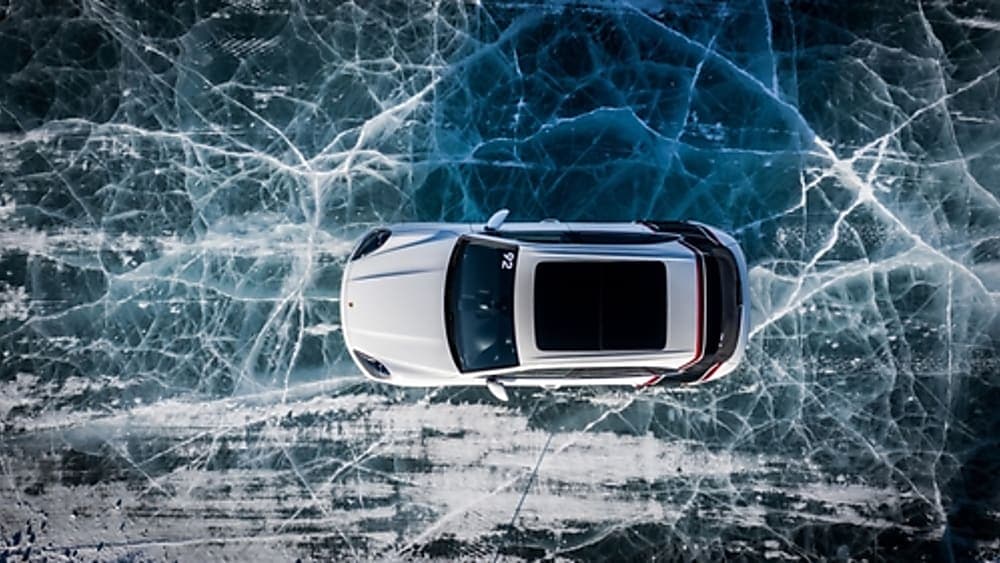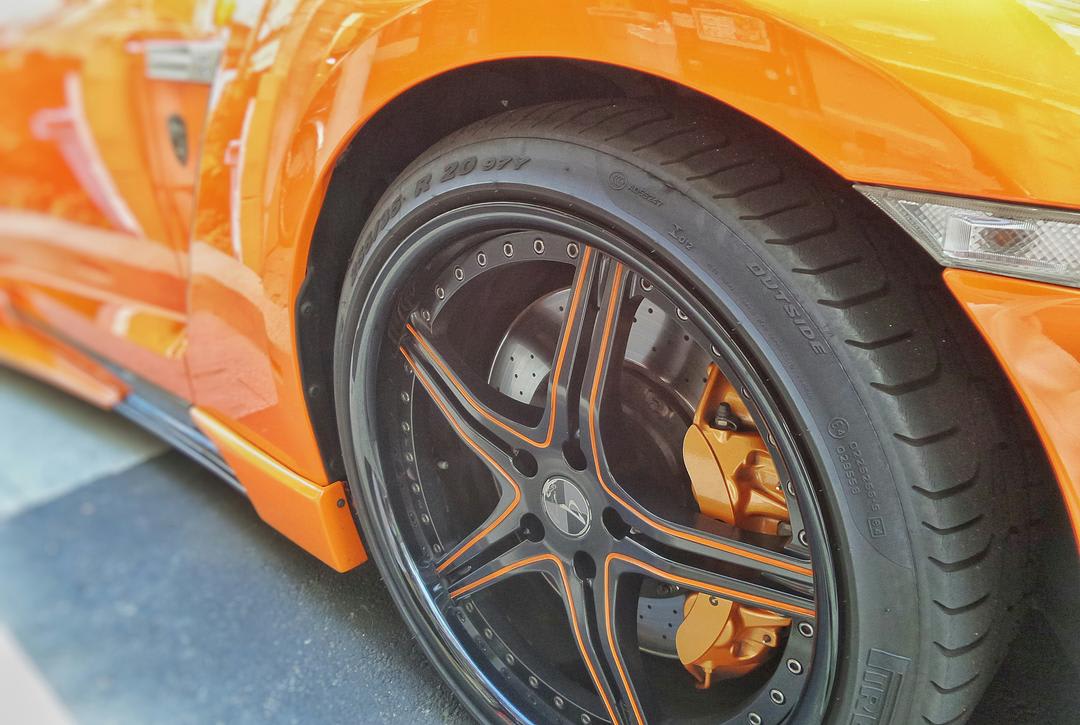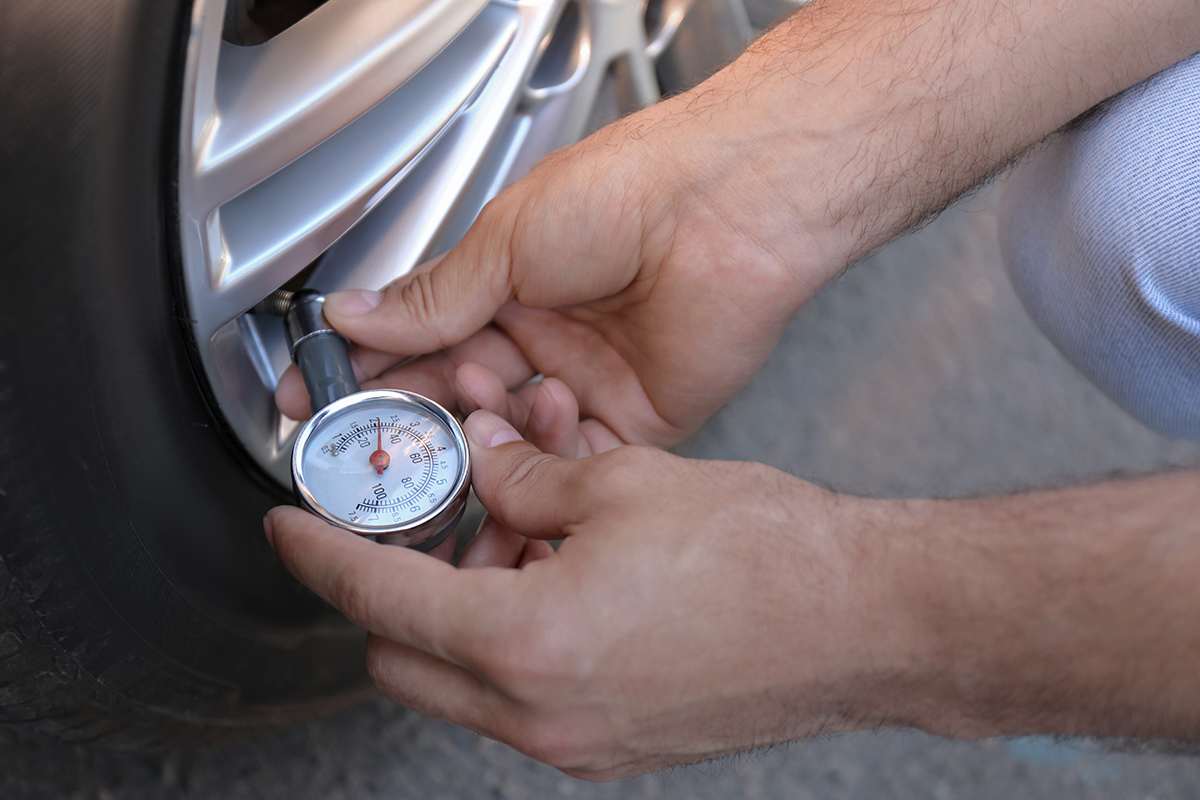Tire Maintenance & Safety
How does air temperature impact vehicle tires?

Free shipping
Best price guarantee
SimpleCrew exclusive savings
0% financing options
Tire replacement coverage
24/7 roadside assistance
Easy returns
Tire Maintenance & Safety


As the seasons change, so do the conditions that affect your vehicle's performance. Temperature fluctuations, in particular, can have a significant impact on your tires, influencing their pressure, wear, and overall safety.
Maintaining proper tire pressure is essential for ensuring optimal fuel efficiency, handling, and longevity. However, many drivers may not realize the extent to which temperature changes can affect their tires, leading to potential driving risks and decreased performance.
In this article, we'll explore the relationship between temperature and tire pressure, providing you with the knowledge and tools needed to keep your tires in top condition year-round. By understanding how weather conditions impact your tires, you can take proactive steps to ensure a confident, more efficient driving experience.
Temperature changes have a direct impact on tire pressure due to the expansion and contraction of air molecules within the tire. As the temperature rises, air molecules become more active and take up more space, increasing the pressure inside the tire. Conversely, when temperatures drop, air molecules slow down and occupy less space, resulting in a decrease in tire pressure.
The relationship between temperature and tire pressure is quantifiable: for every 10°F change in temperature, tire pressure will change by approximately 1 PSI (pound per square inch). This means that a significant temperature drop like the one experienced during the transition from summer to winter can cause a noticeable decrease in tire pressure.
Underinflated tires can lead to a host of problems, including:
On the other hand, overinflated tires can occur during hot weather, leading to the following challenges:
To maintain optimal tire performance and safety, it's crucial to regularly monitor your tire pressure and make adjustments as needed to account for temperature changes. By doing so, you can help extend the life of your tires, improve your vehicle's handling, and promote better fuel efficiency.

Consistent tire pressure checks are essential for ensuring your vehicle operates efficiently and provides solid traction and grip. Aim to inspect your tire pressure at least once a month, with increased vigilance during periods of significant weather changes. This routine helps to reduce the risks associated with improper tire inflation.
For precise measurements, opt for a high-quality tire pressure gauge. Many drivers prefer digital gauges for their accuracy and user-friendly design. Conduct checks when the tires are at ambient temperature, ideally before the vehicle has been driven for the day. This practice provides a true reading of tire pressure unaffected by the heat generated from driving, allowing for more reliable assessments. By incorporating regular checks into your maintenance routine, you enhance the lifespan and performance of your tires, contributing to a smoother and grippy ride.
Utilizing a Tire Pressure Monitoring System (TPMS) enhances your ability to maintain performance and protect your tire. This system keeps a constant check on tire pressure, sending immediate notifications if it identifies any substantial pressure discrepancies. These notifications are crucial for preemptively addressing potential issues that could compromise safety or lead to uneven tire wear.
To ensure the TPMS performs efficiently, conduct periodic system evaluations. Confirm that the sensors are intact and the system is accurately set. When performing regular vehicle maintenance or after changing tires, recalibrate the TPMS to align with the recommended pressure benchmarks. This guarantees that the data provided to the driver remains accurate, maximizing the system's utility.
A well-maintained TPMS also supports driving dynamics and vehicle functionality. Additionally, correct pressure levels ensure that TPMS contributes to better fuel economy and prolongs tire life.
Effectively managing tire performance amid fluctuating temperatures is vital for ensuring optimal vehicle performance. As temperatures plummet, tire pressure tends to decrease, prompting alerts from the TPMS about low inflation levels. When notified, promptly inflating your tires helps counteract the effects of colder air contraction. This action ensures that tires maintain increased road contact, supporting traction and control.
In warmer climates, the risk of overinflation increases as tire pressure can surpass recommended thresholds. To mitigate this, releasing a small amount of air from the tires can help achieve balanced pressure levels. This adjustment guards against the rigidity that excessive pressure causes, reducing the chance of damage from uneven surfaces. By responding to these temperature-related changes, drivers maintain tire integrity and enhance their driving experience.
This proactive approach demands attention to environmental shifts and a dedication to regular tire assessments. Addressing both the cold snaps of winter and the peak heat of summer through timely pressure adjustments can effectively neutralize the adverse effects of temperature swings. This diligence not only preserves tire condition but also fosters a stable and reliable journey.

1. Conduct pressure checks at strategic times
For accurate tire pressure readings, check your tires when the weather isn't changing quickly. Avoid measurements immediately after driving as the heat from the road can cause temporary pressure increases. By checking air pressure when tires have been stationary for a while, you capture a more reliable reading that truly reflects the internal conditions of the tires.
2. Assess the impact of your surroundings
Your geographical and environmental context can significantly influence tire health. Coastal areas with varying humidity levels (Florida, California, Georgia, etc.) may affect tire rubber pliability, while regions prone to frequent rainfall demand vigilance for maintaining traction. Understanding these factors allows you to tailor tire maintenance strategies that account for both climate and terrain nuances, providing consistency in tire performance.
3. Anticipate weather-induced demands
Be proactive in adjusting tire care routines to accommodate weather forecasts and seasonal shifts. As temperatures cool, consider the benefits of specialized tires that enhance traction and performance in wet or icy conditions. Familiarize yourself with strategies such as maintaining adequate tread depth and monitoring pressure more frequently, which are vital for adapting to weather variations and ensuring safety on the road.
At SimpleTire, we understand the importance of maintaining proper tire pressure and are committed to providing you with the tools and knowledge needed to keep your tires in top condition. By following these tips and staying vigilant about seasonal changes, you can ensure a confident and more efficient driving experience for yourself and your passengers.
Shop for tires online with us and find the best deals on high-quality tires that will keep you rolling smoothly, no matter the weather.
Search By